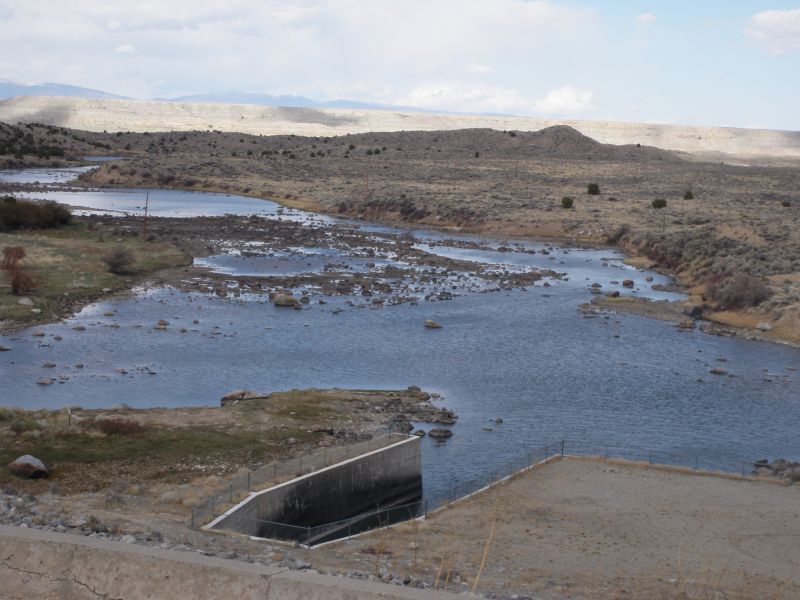Burbot (Lota lota) are native to the Wind River and Bighorn drainage of Wyoming. Over the last several decades, burbot abundance has decreased throughout the species’ native range in Wyoming. Similar trends threaten the majority of native burbot populations worldwide, and thus, conservation of the species has become a high priority for fishery conservationists. In Wyoming, several anthropogenic impacts have been identified as possible reasons for the species’ decline including flow manipulation and over-harvest. Our study will address some of the possible impacts of altered flow regimes in the Wind River valley.
Bull lake, on Bull lake Creek, a tributary of the Wind River, is a glacial lake that was expanded in 1938 with the creation of Bull Lake Dam. Bull Lake now serves as a significant source of irrigation water to the Wind River Valley. It is hypothesized that during major water releases a substantial portion of the Bull Lake burbot population may be washed out of the reservoir, especially that year’s recruitment. By comparing burbot out-migration from Bull Lake during these events to normal summer flows in a nearby natural lake system on Torrey Creek, we hope to assess the impact of these irrigation flows.
Publications
Underwood, Z.*, E. Mandeville, and A.W. Walters. 2016. Population connectivity and genetic clustering of burbot populations in the Wind River Basin, Wyoming. Hydrobiologia 765:329-342 doi: 10.1007/s10750-015-2422-y. View PDF
Contact
Zack Underwood, MS Student
Wyoming Cooperative Fish & Wildlife Research Unit
Dept. 3166, 1000 E. University Avenue
Laramie, WY 82070
zunderwo@uwyo.edu
cell: (303) 905-1498
Annika Walters, Assistant Unit Leader
U.S. Geological Survey,
Wyoming Cooperative Fish & Wildlife Research Unit
Department of Zoology & Physiology, University of Wyoming
Dept. 3166, 1000 E University Ave
Laramie, WY 82071
annika.walters@uwyo.edu
Timeline
2012: Study design and preliminary data collection.
Spring, Summer, and Fall, 2013: Collection of burbot abundance and movement data in association with flow in Bull Lake Creek and Torrey Creek.
Winter, 2013-2014: Analysis of 2013 data.
Spring, Summer, and Fall, 2014: More data collection.
Winter and Spring, 2014-2015: Analysis of remaining project data and preparation of results.







